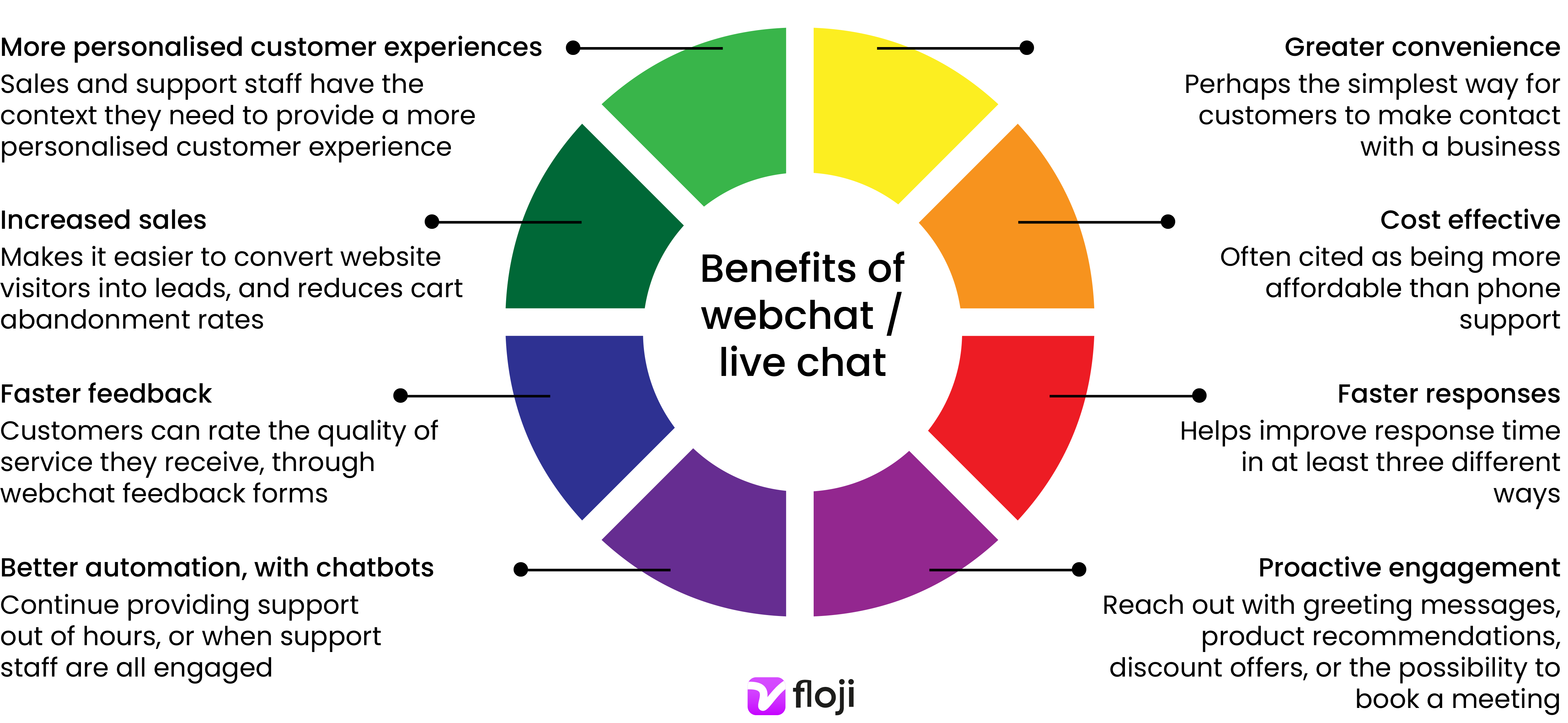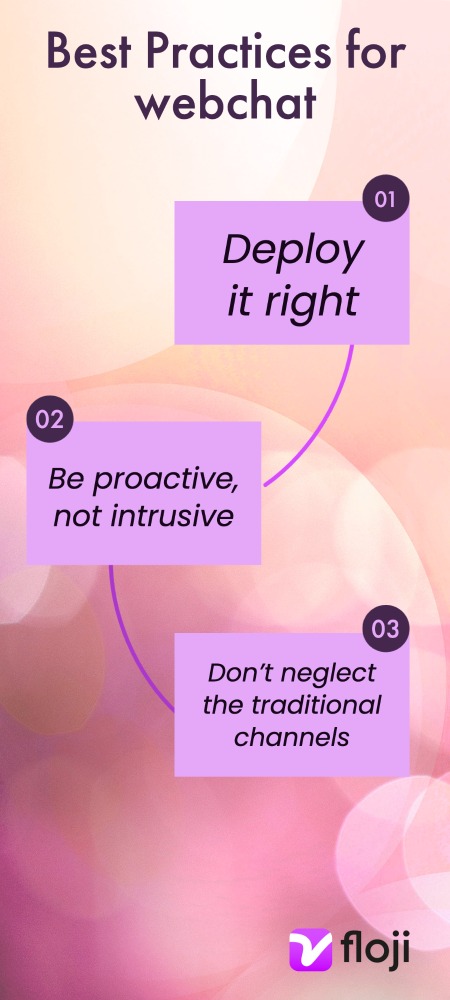Read time: 6 minutes.
More and more studies point to the growing importance of customer experience when it comes to sales, retention and support.
Customers have always wanted great service, of course, but now they expect it faster and across a greater range of communication channels. Traditional phone and email support still have their place, and for some customers, they remain the preferred option. But today, it’s common practice for businesses to cover more ground, and complement the traditional support channels with alternatives. One such alternative channel that has gained favour with customers and businesses alike is webchat. So what is webchat? And how can businesses benefit from offering it?
Webchat, or live chat, is a real-time communication tool that lets visitors to a webpage communicate there and then with the business itself. Webchat often takes the form of a small pop-up dialogue box that overlays a webpage. Page visitors don’t need to install anything or learn how to use any software – they simply click on the webchat box and start typing. This level of accessibility sets webchat apart from the more traditional customer support channels. It’s recognised as being exceptionally convenient for customers, and cost-effective for businesses, which also benefit from being able to engage customers proactively when they land on the page.

Webchat is perhaps the simplest way for customers to make contact with a business. It lets them easily access support from their computers or phones, without having to install anything, go off site, wait on hold, or navigate a multi-layer phone tree. Not only does it allow customers to chat, they can also attach images and files, and enable co-browsing. If the measure of a channel’s usefulness is convenience, webchat reigns supreme.
Webchat is often cited as being more affordable than phone support, since it allows support staff to handle multiple conversations simultaneously. And if they choose to, businesses can manage webchat requests with outsourced or globally distributed support teams.
Faster responses reduce website bounce rate and increase customer engagement and satisfaction. In fact, for many customers, speed of response is the key metric in evaluating quality of service.
Webchat helps improve response time in at least three different ways. Firstly, as mentioned before, webchat lets support staff handle multiple conversations simultaneously, which means they can get around to new support requests faster. In addition, support staff can use webchat to send out prewritten “canned responses” to common queries. Finally, webchat is often implemented along with a chatbot. The bot can take care of simple requests, and route customers to the right support agents. And of course, it’s available 24/7, which lets businesses cover peak demand and out of office hours.
Webchat makes it easier to convert website visitors into leads. Customers who dwell on a product page can be contacted proactively, given the clarification they need, and guided through the sales process.
When it’s used effectively, webchat can reduce cart abandonment rates and help eliminate buyer remorse.
With customer information and conversation history to hand, sales and support staff have the context they need to provide a more personalised customer experience. They can do so even more effectively when webchat is part of an integrated omnichannel engagement strategy.
One study has found that 87% of customers appreciate proactive communication from businesses they’re interested in (inContact). Webchat is far better suited to this proactive engagement than phone or email.
It lets businesses reach out to people browsing their sites, with greeting messages, product recommendations, discount offers, or the possibility to book a meeting with the sales team. Webchat can be set up so different customer behaviours trigger different automated messages. These might vary according to who’s visiting, what page they’re on, and how long they’ve been there.
Webchat becomes a more powerful tool when it’s coupled with a chatbot. Besides taking care of some of the simpler and more repetitive queries, chatbots allow businesses to continue providing support out of hours, or when support staff are all engaged. Research published by Forbes suggests that chatbots can help businesses increase sales by 67%, improve CSAT by 24% and quadruple the speed of response times.
It’s easy to set up a feedback form inside webchat, so customers can comment on and rate the quality of service they receive. This can help businesses understand what aspects of their service are working well, and what needs to be improved or overhauled. This is a much faster feedback mechanism than email provides.

When it’s implemented well, there isn’t much to be said against webchat. The sheer convenience it provides makes it all but indispensable for many businesses. That said, there are some steps businesses can take to maximise its usefulness, and a couple of pitfalls they should watch out for.
The webchat widget should be placed so that it’s clearly visible and yet unobtrusive. When customers want it, it should be easy to find; when they don’t, it shouldn’t distract them.
Webchat works best as part of an omnichannel engagement strategy, and if possible, should be deployed as such. With an omnichannel approach, context travels, so customers can access support across channels – webchat, email, WhatsApp etc. – without ever having to repeat themselves.
An overly active webchat widget can actually drive customers off your page. Be careful not to bombard them with “help”. It’s probably better not to send customers a message the very second they land on your page. Give them a little time to explore, and you’ll have the chance to see what exactly they came for.
Phone and email have their own unique benefits, and it’s likely that a sizeable segment of your user base still relies on them. Webchat is a great addition to your engagement strategy, but not a replacement for everything else.
For a powerful help desk solution that lets you easily deploy webchat across your site, Floji can meet your needs. It makes it easy for businesses to deliver webchat as part of an omnichannel engagement strategy, and unlike other customer support platforms, also gives them the tools for outstanding team collaboration. If you sign up now, you can stay on the free plan for as long as you like, with all core features included.